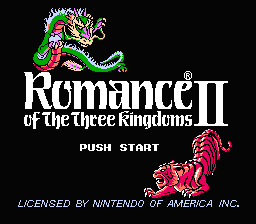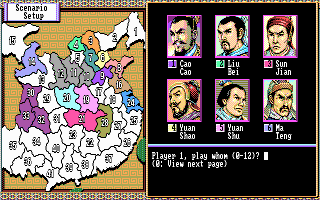

After months of searching, I finally found a copy of an English translation of Romance of the Three Kingdoms, and ever since I started reading it I have found it to be my favourite historical novel.
Historical novel is not the best way to describe this book, as it is a kind of hybrid of history and fiction. The book was written by Chinese official named Luo Guanzhong in the 14th century, and purports to be a history of the fall of the Later Han Dynasty and the Three Kingdoms period (169-280 AD). At 120 chapters and 800 000 words, this is an epic tale, where the author explains how the Chinese emperors grew weak in the latter half of the second-century, to the point where rebels and warlords took over the country and left the last Han emperor a puppet-ruler. The author did have access to strong sources, including ones that go back to third century to base his work on, and most of it does follow the written accounts. But Luo Guanzhong also alters the historical record in places to make his main character, Liu Bei, and his followers, to be more virtuous and honourable than they actually were. This is because the author wanted to use this book to be a kind of guide, to show people different ways on how to govern, fight wars, and behave. Dozens of his characters are given a full range of characteristics and depth, even if they appear in only a few lines. Some are heroic, others cowardly. Even his heroes are flawed, and his villains have virtues. I have found his portrayal of Cao Cao, the main villain in the work, to be the most interesting person in the whole book. Cao Cao's philosophy gets summed up when he says "I would rather betray the world than allow the world to betray me," and it is this outlook that leads him to becoming the most important warlord of the collapsing Han Dynasty (his son would eventually depose the last Han Emperor and start the Wei Dynasty).
You can read this book in many ways - as an evaluation of character, as a guide to rulership and government, a practical supplement to Sun Zu's The Art of War, or just as an intriguing story that has been shared for centuries.

For English readers, there are a couple of choices when getting a translation of this book. In 1925, C.H. Brewitt-Taylor provided the first complete English translation of Romance of the Three Kingdoms. The book is filled with all kinds of spelling mistakes and errors, and it comes with no notes or explanations. A much better translation and edition is Moss Roberts' Three Kingdoms: A Historical Novel, which does include an introduction and lenghty endnotes. Another option is to read an online version (a cleaned-up version of Brewitt-Taylor's edition) here.
No comments:
Post a Comment